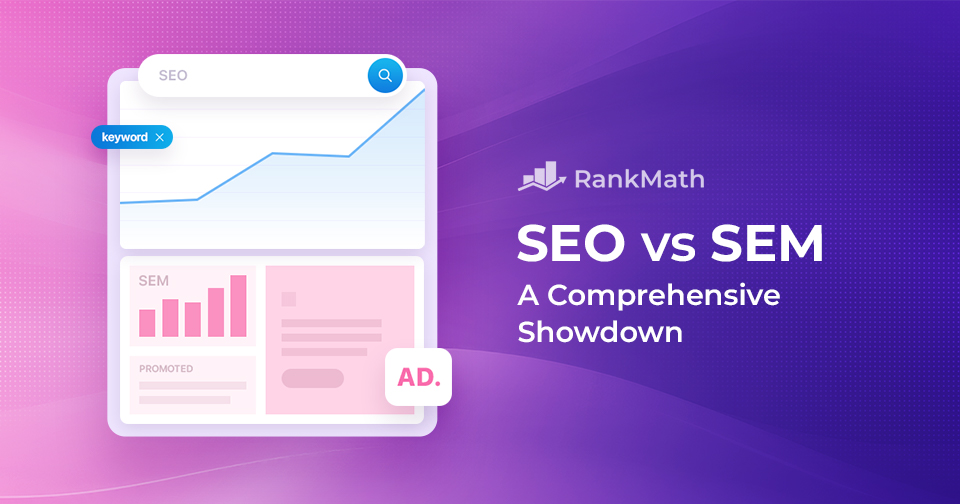When you’re trying to get more visitors to your website, two main options usually come up: SEO and SEM.
At first, they might sound the same, but they work in very different ways.
SEO is about improving your site so it shows up naturally in search results, while SEM uses paid ads to get your site seen right away.
In this easy-to-follow comparison of SEO vs. SEM, I’ll discuss the differences between them, like how they bring in website visitors and how quickly they show results.
So, without any further ado, let’s begin the SEO vs. SEM showdown!

Table Of Contents
1 What is SEO and SEM?
Before we begin the comparison of SEO vs. SEM, let’s briefly understand SEO and SEM.
1.1 SEO (Search Engine Optimization)
SEO, or Search Engine Optimization, is all about making your website easier for both search engines and your audience to love. When you optimize your site’s content and structure, you’re giving Google clear signals that your pages deserve to rank higher.
SEO is the key to enhancing your online presence organically.
How does this work?
When your website is optimized for search engines, it’s more likely to appear higher in the search results. This increased visibility translates into more organic (non-paid) traffic, as the audience tends to click on the first few results that appear on a search page.
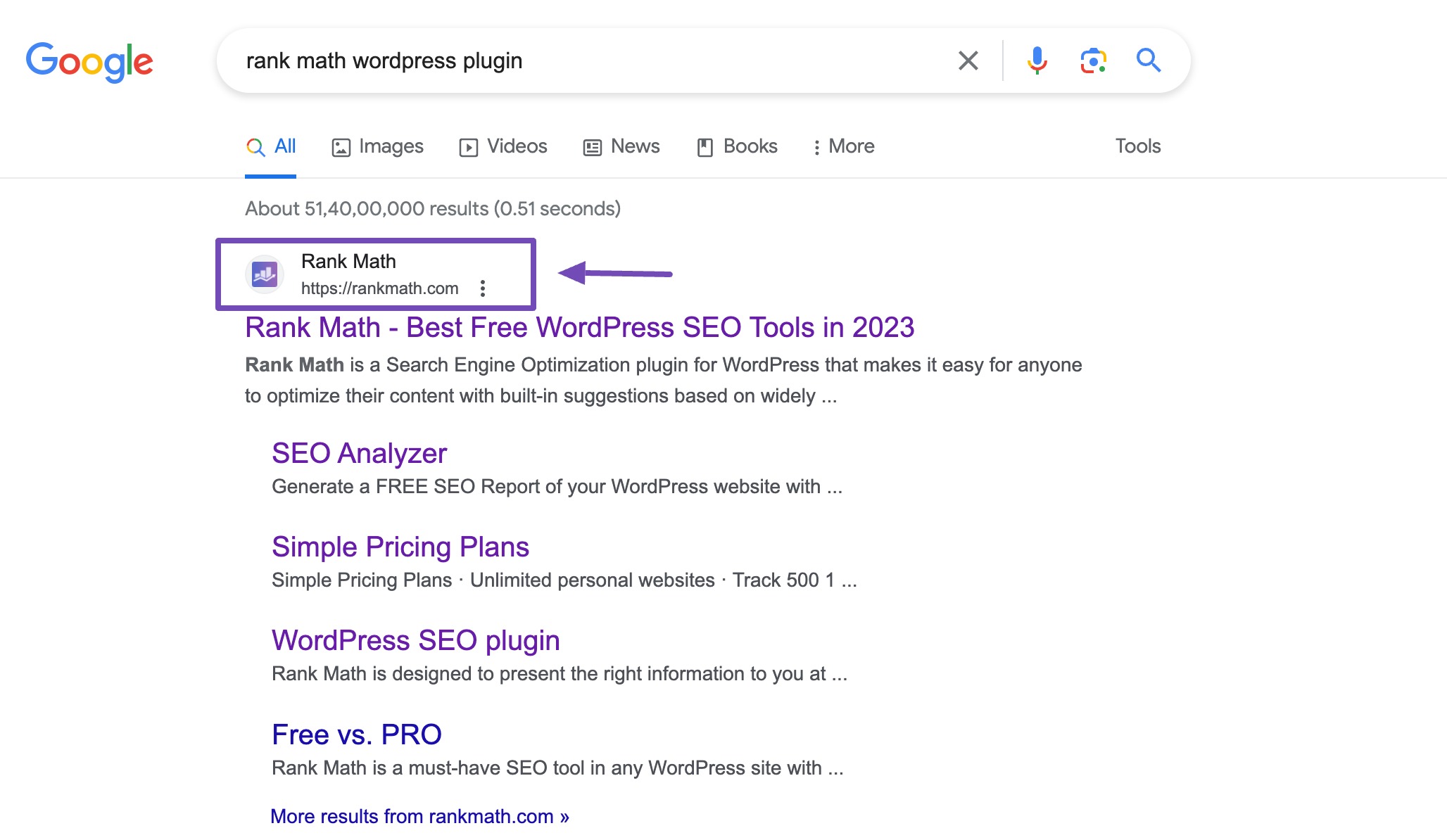
Refer to our SEO glossary to familiarize yourself with the common terms around search engine optimization.
1.2 SEM (Search Engine Marketing)
SEM, or Search Engine Marketing, takes things a step further. While SEO is one part of SEM, SEM also includes paid strategies to get your website in front of visitors faster.
Unlike SEO, which focuses on organic methods, SEM includes paid advertising to achieve quicker and more prominent results.
How does this work?
SEM often involves using platforms like Google Ads, where businesses pay to have their ads displayed at the top of relevant search results. These paid advertisements are usually labeled as Sponsored and can appear above or alongside organic search results, providing a way for businesses to attract immediate attention from the audience searching for specific keywords.
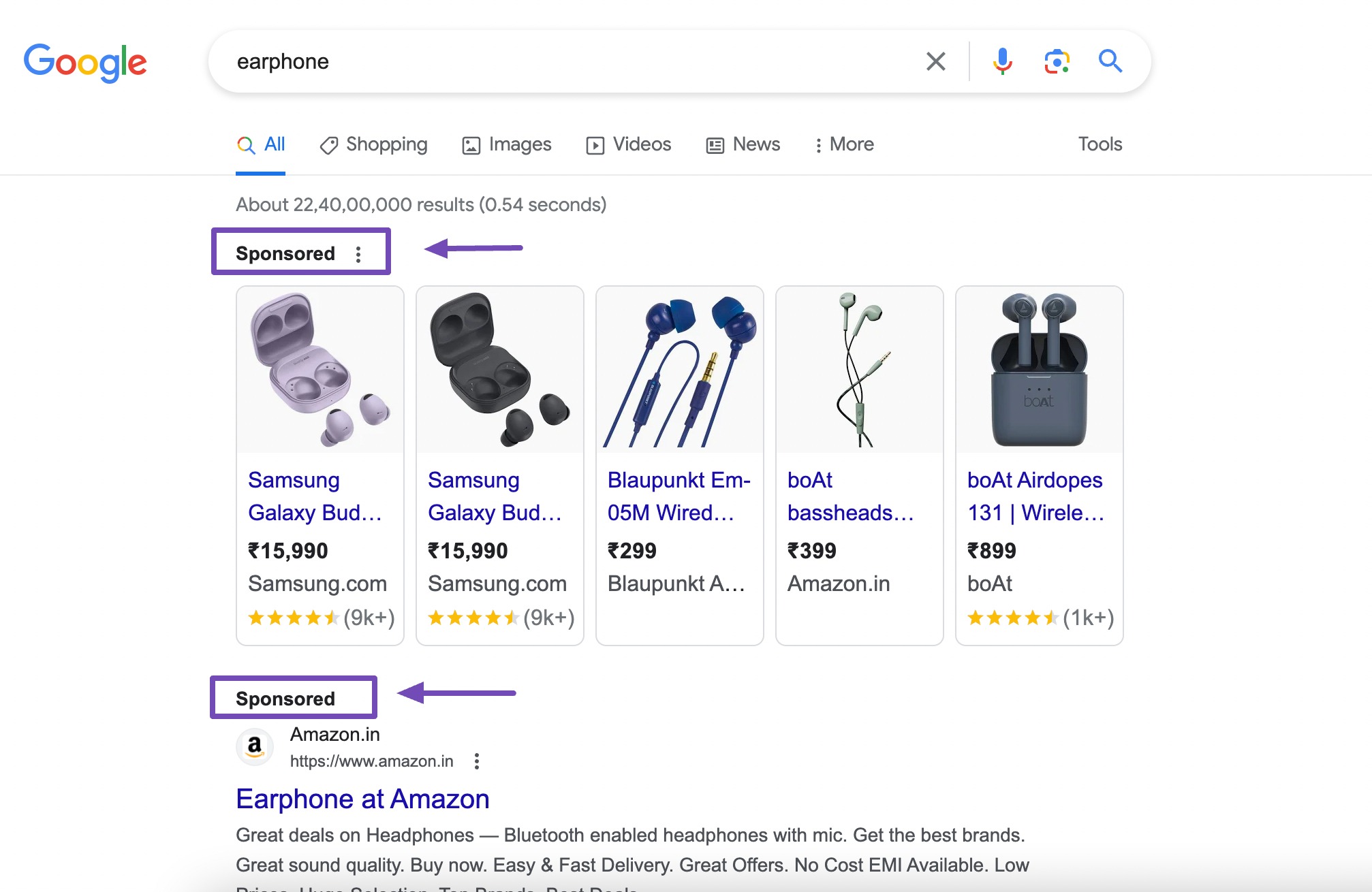
2 Key Differences: SEO vs. SEM
Now that you’ve an overview of SEO and SEM, let’s discuss the key differences between SEO vs. SEM.
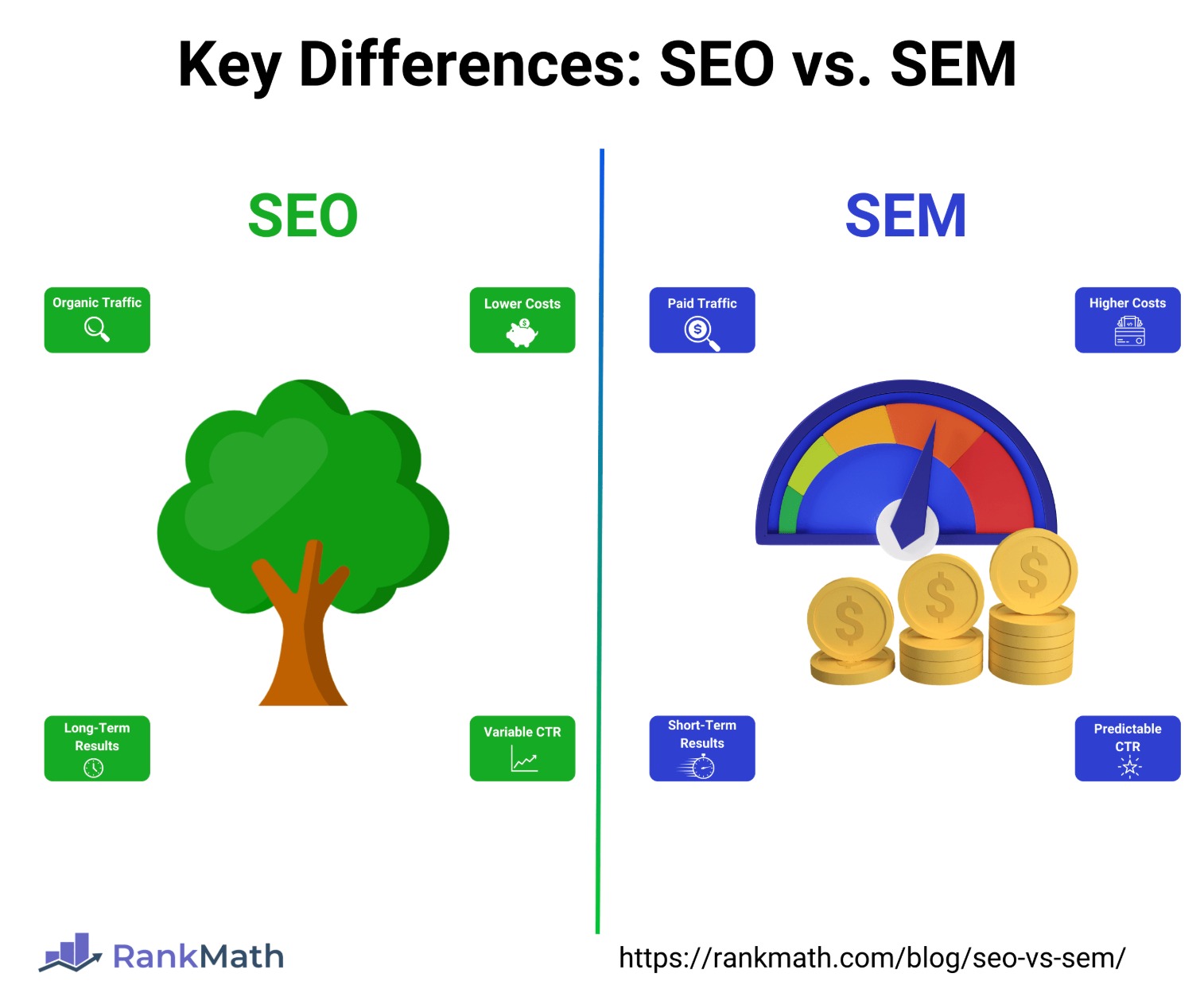
The table below will provide a brief overview of SEO vs. SEM.
| SEO | SEM | |
| Nature of Traffic | Organic traffic from search engines | Paid traffic from search engines |
| Costs | Lower costs as it focuses on optimizing website and content | Higher costs due to paid advertising and bidding on keywords |
| Speed of Results | Slower long-term results | Faster short-term results |
| Click-through Rates (CTR) | Lower costs as it focuses on optimizing the website and content | CTRs can be more predictable as ads are displayed prominently in search results |
We’ll now discuss the differences between SEO vs. SEM in detail.
2.1 Nature of Traffic
SEO: Organic Traffic
In SEO, the traffic is organic, meaning your audience finds your website naturally through search engine results. This traffic is driven by the relevance and quality of your content to audiences’ search queries.
For instance, if you run a bakery and your website appears at the top of search results when someone looks for “best local bakeries,” that’s organic traffic through SEO.
SEM: Paid Traffic
SEM relies on paid strategies to attract traffic. This involves placing advertisements at the top of search results or on relevant websites, and you pay each time someone clicks on your ad.
For instance, if the bakery mentioned earlier uses Google Ads to display an ad at the top of search results, the traffic generated through clicks on that ad is paid traffic through SEM.
2.2 Cost
SEO: Generally lower cost but involves time and effort
SEO is often considered cost-effective in the long run as it doesn’t involve direct payment for clicks. However, it requires ongoing efforts to optimize content, build quality backlinks, and improve the overall website structure.
For instance, if you regularly update your bakery website with fresh content and optimize it for relevant keywords, you can boost your organic rankings without a substantial financial investment.
SEM: Immediate results, but requires a budget
SEM delivers quick results, but it comes with a cost. You need to allocate a budget for your advertising campaigns, bidding on keywords to ensure your ads appear prominently in search results.
For instance, the bakery can set a daily budget for Google Ads, ensuring the ad shows up when your audience searches for terms like “delicious pastries” or “freshly baked goods.”
2.3 Speed of Results
SEO: Gradual and long-term
SEO is a long-term strategy that requires patience. It takes time for search engines to recognize and reward optimization efforts, and improvements in rankings happen gradually.
For instance, after implementing SEO best practices, the bakery might see a slow but steady increase in its website’s visibility over several months.
SEM: Instant but short-term without ongoing investment
SEM provides quick results, and ads can appear almost immediately once a campaign is launched. However, these results may diminish once the advertising budget is exhausted unless the campaign is continually funded.
For instance, the bakery’s ad can start appearing at the top of search results within hours of initiating a Google Ads campaign.
2.4 Click-through Rates (CTRs)
SEO: CTR influenced by organic search rankings
In SEO, the Click-through Rate (CTR) is determined by how compelling and relevant your organic search result appears to your audience. Higher rankings often result in higher CTRs.
For instance, if the bakery’s website is listed as the first result for “custom cakes,” audiences are more likely to click through to the site.
SEM: CTR influenced by ad placement and relevance
In SEM, CTR is influenced by the placement of paid ads and their relevance to user queries. Well-created ads with high relevance tend to have higher CTRs.
For instance, if the bakery’s Google Ads ad includes enticing visuals and a compelling offer, audiences are more likely to click on it when searching for “speciality desserts.”
Now that you have an idea of the key differences between SEO vs. SEM, let’s discuss SEO and SEM in detail.
3 Overview of SEO
SEO has three major pillars: on-page optimization, off-page optimization, and technical SEO. Let’s start by looking at on-page optimization and why it matters for you.
3.1 On-Page Optimization
On-page optimization is all about making your content and pages more appealing to both search engines and your audience. It includes keyword research, titles, meta descriptions, headings, and most importantly, quality content.
Keywords are the foundation of your content. When you know the exact words and phrases your audience types into Google, you can create content that meets their intent. The right keywords increase your chances of ranking higher and attracting the visitors you want.
You can use Rank Math to sharpen your keyword research and find opportunities you might miss otherwise.

Title tags and meta descriptions may seem small, but they have a big impact. A well-optimized title and meta description grab attention in search results, while clear heading tags (H1, H2, H3…) make your content easy to scan. Together, they improve both visibility and user experience.
At the end of the day, search engines reward content that visitors actually find useful. If you create valuable, relevant, and engaging content, your readers stay longer, share your work, and even link back to it, all signals that help you rank higher.
Here’s where AI comes in: nearly half of users (47%) already use AI to create content faster, and 35% are focusing more on quality than quantity. You don’t have to choose between speed and quality; you can have both.
With Rank Math’s Content AI, you can produce well-optimized, high-quality content in less time.
3.2 Off-Page Optimization
Off-page optimization is everything you do outside your website to boost its authority and visibility. Think of it as building your site’s reputation on the internet. The key factors here include backlinks, social media presence, and outreach.

For instance, if a popular food magazine features an article on your bakery’s speciality cakes and links to your website, it enhances your site’s credibility in the eyes of search engines.
Also, social media activity and brand mentions across the web contribute to off-page optimization. Positive mentions and engagement on social platforms can indirectly influence search rankings by increasing brand visibility and demonstrating popularity.
Refer to our dedicated tutorial on off-page SEO to learn more about off-page SEO techniques in detail.
3.3 Technical SEO
Technical SEO is all about making sure your website runs smoothly behind the scenes.
If your site takes too long to load or doesn’t look good on mobile, visitors will leave before they even read your content. Search engines notice this behaviour and prioritize faster, mobile-friendly sites. By improving speed and design, you’re giving your visitors a seamless experience across all devices.
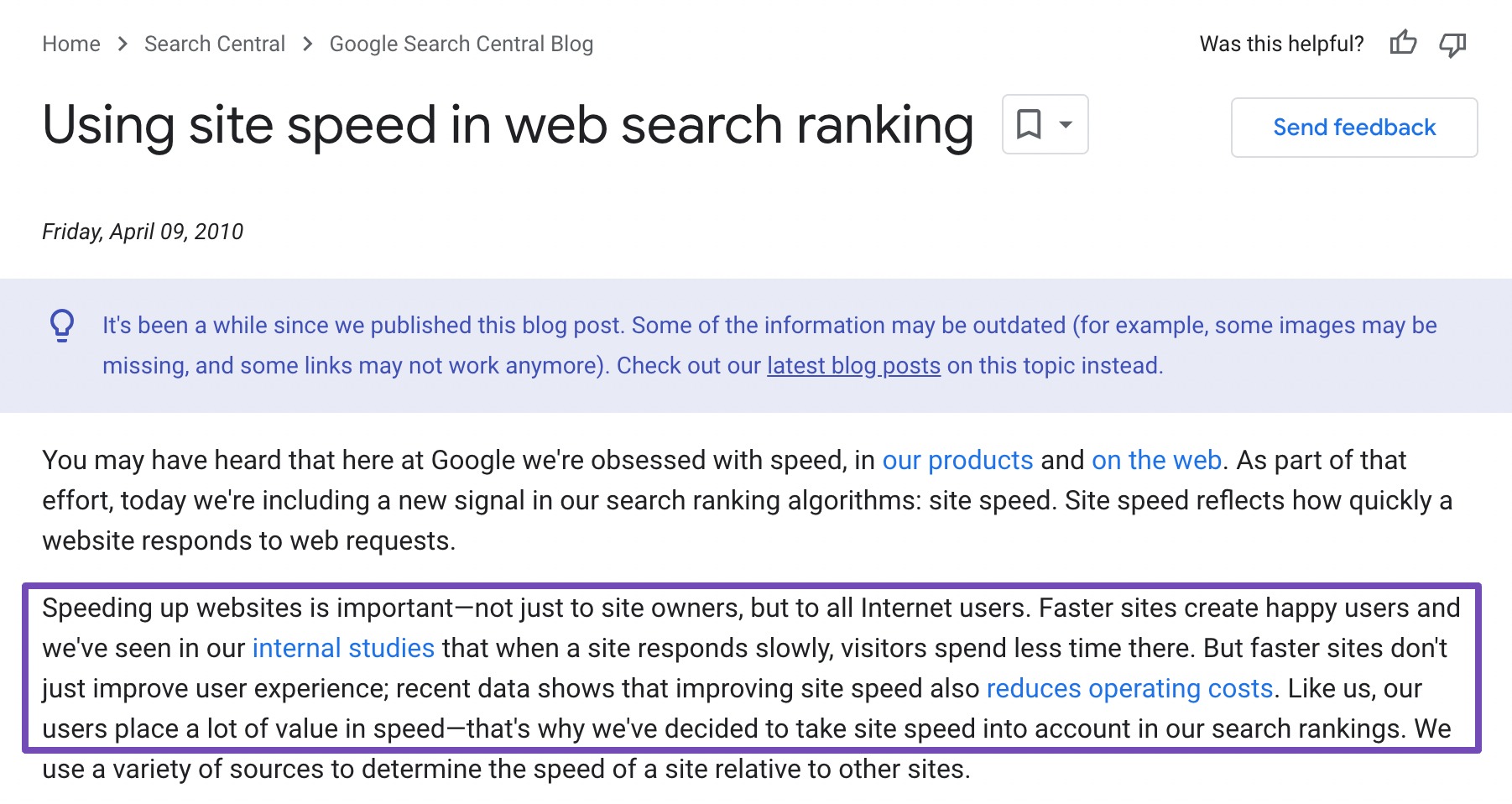
Search engines use bots (called crawlers) to scan and index your web pages. Your job is to make it easy for them. That means having a clear site structure, using tools like sitemaps and robots.txt files, and avoiding duplicate content that might confuse search engines. The easier it is for crawlers to understand your site, the better your chances of ranking higher.
Refer to our dedicated tutorial on our technical SEO guide to unlock the secrets of these techniques.
4 Overview of SEM
Search Engine Marketing (SEM) is all about getting your business in front of the right audience, fast. Unlike SEO, where you wait for organic results, SEM uses paid advertising on platforms like Google Ads and Bing Ads to put your website directly at the top of search results.
Google Ads dominates the market, while Bing Ads still serves a valuable audience, especially in certain demographics.
With both, you can bid on keywords your customers are searching for and have your ads displayed when it matters most.
4.1 Bid Setting
Your bid is simply the maximum you’re willing to pay when someone clicks on your ad. The beauty is, you’re in control.
You can go with manual bidding, where you decide how much to spend per click, or let the platform handle it through automated bidding, where algorithms adjust bids to help you hit specific goals like maximizing conversions or achieving a set return on ad spend (ROAS).
Let’s say your bakery sets a $1 per-click budget for the keyword custom cakes, you can manually bid $1 for each click. Or, you can choose automated bidding, set your target CPC, and let the platform optimize based on user location, device, and even the time of day.
4.2 Creating Effective Ad Copy
Your ad copy is what convinces visitors to click. To be effective, it needs to be concise, relevant, and aligned with what your audience is searching for.
That means naturally including keywords, highlighting what makes your business unique, and giving visitors a clear call-to-action (CTA).
For example: Order Custom Cakes Today. Freshly Baked, Delivered Fast. Call Now!”
Good ad copy doesn’t just get clicks, it attracts the right clicks.
Here’s an example of an effective ad copy:
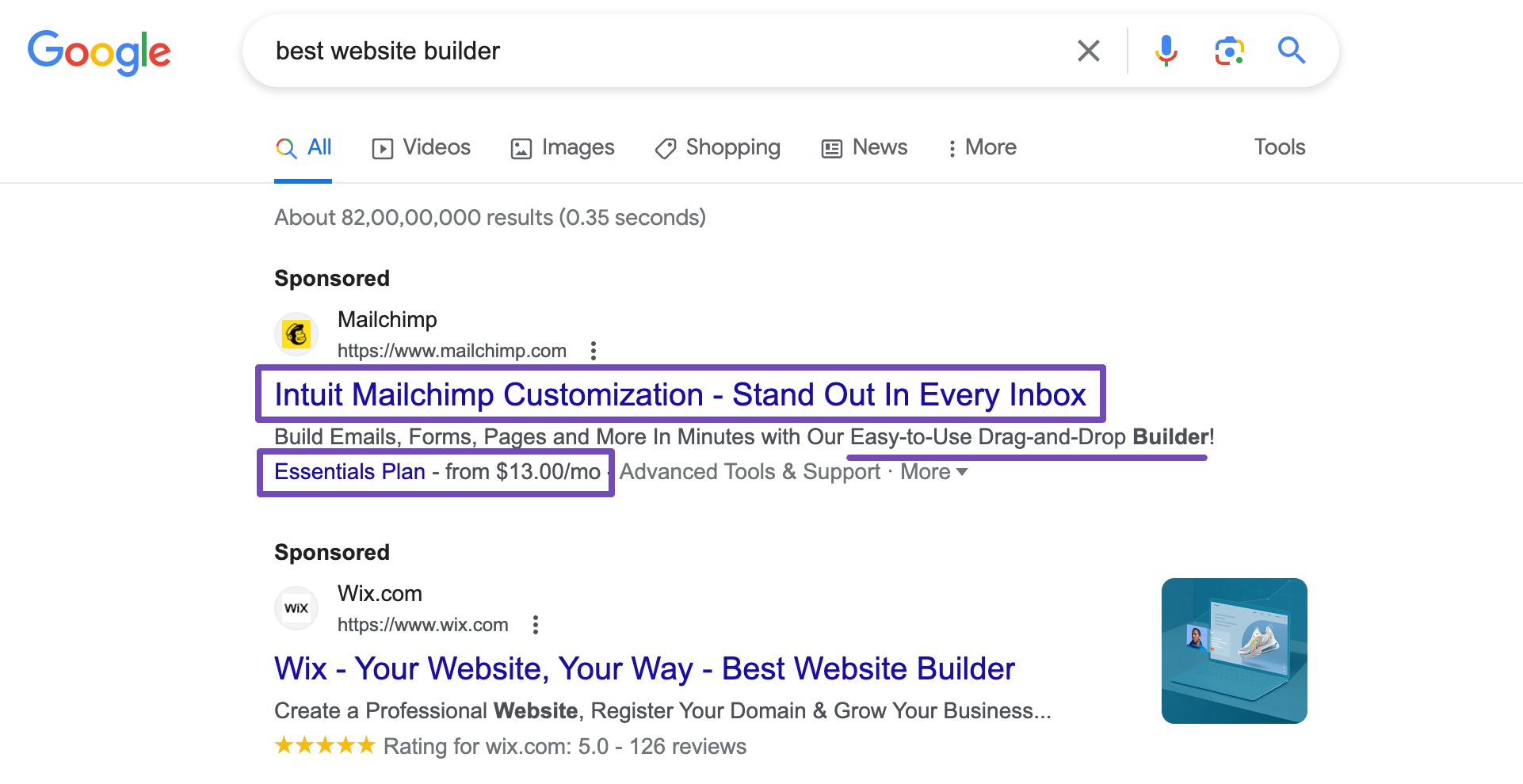
4.3 Audience Targeting
SEM also lets you zero in on exactly who should see your ads. You can target by demographics, interests, behaviours, or even remarket to visitors who’ve already visited your website.
The more precise your targeting, the more likely your ads are to resonate with the right visitors, meaning you spend less and get better results.
In short, SEM gives you speed, control, and precision to reach your audience exactly when they’re searching for what you offer.
5 SEO vs. SEM – Which One to Choose?
Deciding between SEO and SEM really comes down to your goals, budget, and how quickly you want results.
If you need immediate visibility and leads, SEM is your best bet. Paid ads can put your business at the top of search results right away.
If you’re focused on long-term growth and steady organic traffic, SEO is the way to go. It takes time and effort, but once your pages start ranking, you can attract visitors without paying for every click.
Budget is also an important factor. SEM requires direct ad spend, while SEO costs more in time and effort than in money.
For example:
- If you’ve just launched an online store, SEM can help you quickly bring in customers.
- If you’re running a blog or content-heavy site, SEO is better for building lasting visibility.
Of course, you don’t always have to choose just one. SEO and SEM often work best together. You can use SEM to capture quick wins while your SEO builds up in the background.
For instance, keeping your ad copy in line with the keywords you target in SEO creates consistency and strengthens your brand across platforms.
The right choice depends on what you want to achieve, how much you’re willing to spend, and how patient you can be with results. In many cases, blending both gives you the best of immediate impact and long-term growth.
6 Frequently Asked Questions
Can I use both SEO and SEM simultaneously?
Yes, you can combine SEO and SEM, providing immediate visibility through paid ads while building organic visibility for long-term sustainability.
Is keyword research important for both SEO and SEM?
Yes, keyword research is important for both. SEO uses keywords to optimize content, while SEM relies on targeted keywords for effective ad campaigns.
Can I switch between SEO and SEM strategies?
Yes, you can adjust strategies based on goals and circumstances. You may prioritize SEM for specific campaigns and switch to SEO for long-term growth.
How often should I update my SEO strategy?
SEO strategies should be regularly reviewed and updated to align with changing search engine algorithms, industry trends, and business goals.
7 Conclusion
When boosting your online presence, understanding the differences between SEO vs. SEM is key.
SEO is like a long-term investment, slowly building up your website’s visibility in search results over time. On the other hand, SEM is like a quick boost, using paid strategies to get immediate attention.
The best strategy often involves a mix of both.
By combining SEO’s steady growth with SEM’s instant impact, you can create a well-rounded online strategy that caters to both short-term goals and long-term success.
So, whether you’re aiming for lasting visibility or a quick promotional push, finding the right balance between SEO and SEM can significantly affect how your business shines on the internet.
Which one do you prefer – SEO, SEM, or both? Let us know by tweeting @rankmathseo.
